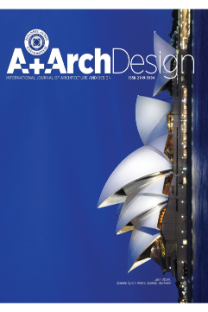Greenwashing in Turkey: Sustainability as an Advertising Strategy in Architecture
Greenwashing Sustainability, Architectural Design,
___
- [1] Flint, R. W., 2013. practice of Sustainable Community Development: A participatory Framework for Change, Springer Science+Business Media, New York.
- [2] Gültekin, A. B., 2007. “Sürdürülebilir Mimari Tasarım İlkeleri Kapsamında Çözüm Önerileri”, 19. Uluslararası Yapı ve Yaşam Kongresi: Mimarlığın Geleceği, Gelecek için Mimarlık, 22-24 Mart 2007, pp.409-419, Bursa.
- [3] Ferry, L., 1992. Ekolojik Yeni Düzen, Çeviren: Ilgaz, T., 2000, Yapı Kredi Yayınları, İstanbul.
- [4] Madge, P., 1997. “Ecological Design: A New Critique”, Design Issues, 13(2): 44-54.
- [5] Vanegas, J. A., DuBose, J., Pearce, A. R., 1995. “Sustainable Technologies for the Building Construction Industry”, Proceedings of the Symposium on Design for the Global Enviroment, 2-4 November 1995, Atlanta.
- [6] Kim, J. J., Rigdon, B., 1998. Sustainable Architecture Module: Introduction to Sustainable Design, National pollution prevention Center for Higher Education, Michigan.
- [7] Sev, A., 2009. Sürdürülebilir Mimarlık, YEM, İstanbul.
- [8] Rees, W.E., 1990. “The Ecology of Sustainable Development”, The Ecologist, 20 (1): 18-23.
- [9] Çelebi, G., Gültekin, A., Harputlugil, G., Bedir, M., Tereci, A., 2008. Yapı Çevre İlişkileri, Sürdürülebilirekolojik Tasarım, Enerji Etkin Bina Tasarımı, Bina Değerlendirme Araçları, Simülasyon Programları Konusunda Temel Bilgiler. Türkiye. TMMOB Mimarlar Odası SMGM Yayınları No:10.
- [10] Sassi, P., 2006. Strategies for Sustainable Architecture, Taylor & Francis, oxford.
- [11] Bayraktaroğlu, B., 2014. “Sürdürülebilir Bina Sertifika Sistemlerinin Ölçütlerinin Belirlenmesinde Sürdürülebilirliğin Sosyal Boyutunun Etkisi: Türkiye İçin Öneriler”, Yüksek Lisans Tezi, Yıldız Teknik Üniversitesi, Mimarlık Anabilim Dalı.
- [12] Özel, A. P., 2015. “Çevresel Aktivizm, Halkla İlişkiler ve Yeşil Aklama Üzerine Kuramsal Bir Bakış”, Journal of Selçuk Communication, 8(4), pp.73-89.
- [13] Zimmer, M.R., Thomas, F.S. ve Stafford, M.R., 1994. “Green Issues: Dimensions of Environmental Concern”, Journal of Business Research, 30, pp.63-74.
- [14] Bowen, F. and Correa, J. A. A., 2014. “Greenwashing in Corporate EnvironmentalismResearch and Practice: The Importance of What We Say and Do”, Organization & Environment, 27(2), pp.107-112.
- [15] https://www.vadistanbul.com/en/teras, Erişim: 02.05.2019, 14:00
- [16] https://www.temaistanbul.com/en/bahce/, Erişim: 02.05.2019, 14:00
- [17] https://www.sehrizar.com/, Erişim: 02.05.2019, 14:00
- [18] https://www.sinpas.com.tr/projeler/bosphorus-city, Erişim: 02.05.2019, 14:00
- [19] http://www.zorlucenter.com.tr/en/ Erişim: 02.05.2019, 14:00
- ISSN: 2149-5904
- Başlangıç: 2015
- Yayıncı: İstanbul Aydın Üniversitesi
Building Resilience By Responding to Change: Case Study of Fes
Meltem VATAN KAPTAN, Mohammed BELCADİ
Multicultural Education in Barcelona
Greenwashing in Turkey: Sustainability as an Advertising Strategy in Architecture
Oğulkan ERDEN, Pınar ÖKTEM ERKARTAL
Meltem VATAN KAPTAN, Mohammed BELCADİ
